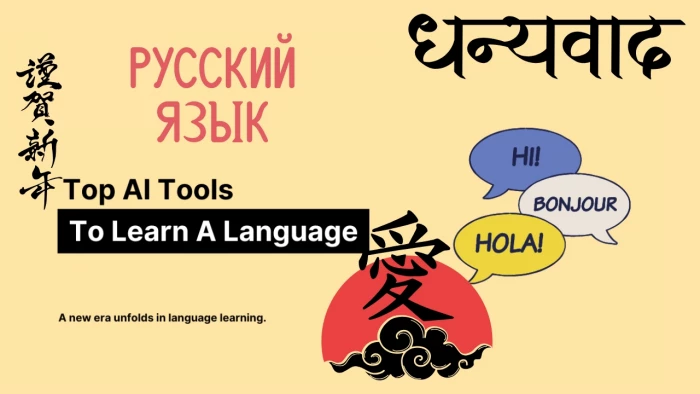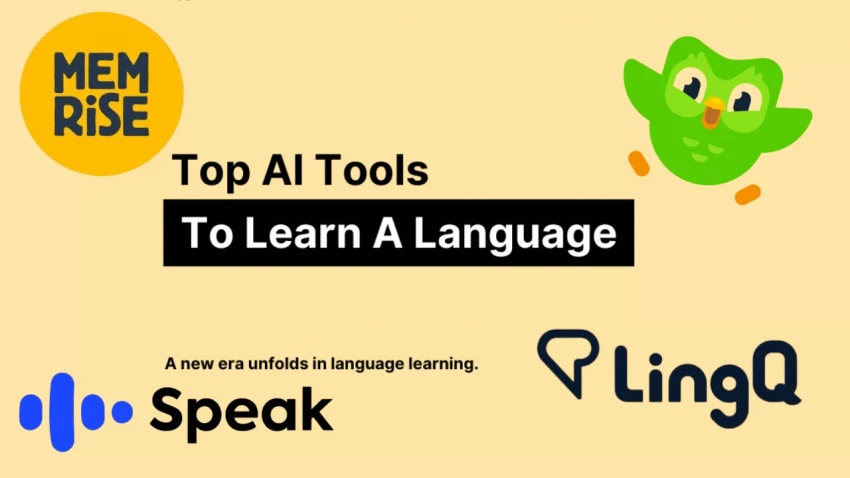

I landed in Madrid with just two words of Spanish—hola and gracias. By the end of the trip, I could order food, ask for directions, and even joke with locals. The secret wasn’t a phrasebook; it was AI. That’s when I discovered AI-powered language apps. Suddenly, learning felt less like memorizing and more like living in the language. Conversations flowed, words stuck, and I actually enjoyed the process. If you’ve ever struggled with traditional learning methods, you’ll understand why AI feels like a game-changer.
Let me walk you through the tools I’ve used, how they shaped my journey, and why they might help you master a new language faster than you ever thought possible.
At first, I doubted whether AI could really teach me a language. But then I noticed something: the apps adapted to me. Instead of repeating endless verb tables, the software reminded me of words right before I forgot them. Instead of reading stiff dialogues, I practiced real conversations with AI chatbots.
The shift was huge. A study in Applied Cognitive Psychology even confirmed what I was experiencing: spaced repetition improves memory retention by up to 300%. I wasn’t just learning words—I was remembering them.
I started with Duolingo. Millions of learners swear by it, and now I know why. Its new GPT-4 roleplay feature made my practice sessions feel like real-life encounters. One day, I was ordering tapas in Spanish, the next, I was negotiating a train ticket in French.
The AI didn’t just feed me stock answers. It corrected my mistakes in real time, explained grammar, and even adjusted difficulty. This wasn’t passive learning—it was interactive, almost like having a private tutor.
While Duolingo kept me engaged, LingQ helped me dive deeper. I could import podcasts, news articles, and even YouTube videos in my target language. The AI highlighted new words, gave instant translations, and stored difficult terms in my flashcards.
I remember reading my first French news article without constantly checking a dictionary. It felt empowering. LingQ made the language come alive because I was learning from real conversations and authentic media.
One of my biggest struggles was speaking without freezing. I wanted practice, but I didn’t want to embarrass myself in front of native speakers. That’s when I found Speak.
Speak became my safe zone. I could roleplay conversations and get instant feedback on pronunciation and fluency. The AI picked up mistakes I didn’t even know I was making. Within weeks, I noticed my confidence skyrocketing. I was no longer scared of making mistakes—I was learning from them.
Vocabulary always slipped away from me. I’d learn ten new words and forget them the next day. Memrise changed that. Its AI-driven spaced repetition predicted when I was about to forget a word and reminded me just in time.
Instead of memorizing in bulk, I learned naturally. Seeing videos of native speakers using those words gave me the cultural context, too. That’s when I realized language is more than grammar—it’s rhythm, humor, and connection.
Pronunciation was my weakness. No matter how many times I practiced, I couldn’t sound natural. Elsa Speak fixed that. It listened to my accent, compared it to native speech, and showed me exactly where I was off—tone, rhythm, even stress.
I practiced daily for just 10 minutes. After three months, I sounded more confident and less robotic. Elsa gave me the feedback I never got in classrooms.
One of my favorite tricks is using ChatGPT for roleplay. I ask it to act as a shopkeeper, a travel agent, or even a casual friend. I switch between Spanish, French, and German. The AI adjusts its responses to my level, corrects mistakes, and keeps the conversation flowing.
It feels like endless conversation practice, without the awkward silences or fear of being judged. I use it every night for 15 minutes, and it’s made me more fluent than any workbook ever could.

Every tool I used targeted one of the key pillars of fluency:
By rotating between these tools, I wasn’t just memorizing; I was living the language daily.
Even though AI pushed me forward, I realized something important. No app could replace the cultural insights I got from human teachers. A French tutor once explained why certain phrases don’t translate directly into English. That kind of depth made me appreciate the culture behind the language.
So now, I mix both: AI for daily practice, and humans for cultural nuance and advanced explanations. It’s the perfect balance.
If you’re just starting, don’t overwhelm yourself with all the apps at once. Pick one or two. Duolingo for structured lessons, Memrise for vocabulary, or Elsa Speak if pronunciation is your weak point. Consistency matters more than variety at first.
Over time, layer in more tools. That’s how I built momentum without burning out. Five minutes a day grew into thirty, and before I knew it, I was chatting confidently with locals on my travels.
Looking back, I can see how AI completely reshaped my approach to languages. What used to feel like a chore now feels like an adventure. I can practice on the train, in bed, or even while cooking dinner.
These tools don’t just teach words—they build confidence. They make the language part of your daily life. And once you feel that shift, fluency comes much faster.
So, the real question is: which AI tool will you try first?
Be the first to post comment!